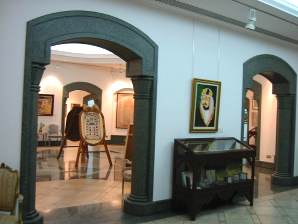



Safya's paintings are very interesting from a cultural perspective. One can not take and publish photos of women and family life here, but one can paint them. So she has recorded scenes that I, or most other visitors and modern Saudis, would not be able to see otherwise. Bedouin ceremonies, life in the rural areas, and such. I very much enjoyed looking at the paintings and listening to her stories about them. Details on the beautiful antique doors and walls in Mr Tarik's office:
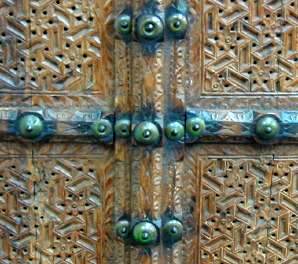
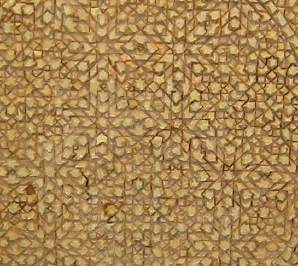
Houses are rather big in Saudi Arabia. I used to laugh when Sabah told me how she kept getting bruises each time she came back to the UK, from banging into furniture in small English houses. Now I can see her point. My flat in Jeddah was so big that I could never get to the phone on time -- by the time I got through all the rooms and stairs, whoever was calling usually gave up. And my flat was small by local standards. Well, at least by the standards of those I worked with. There was much poverty in the country, and I am sure that all of these people living on subsistence level did not live in such villas.
Many of the houses I have visited are not only big, but also very beautifully decorated. There is much nice furniture, low chairs with big elbow pillows, expensive carpets, intricate wooden or stone engravings and embroideries with themes from the Koran, and marbled or tiled flooring of excellent quality and pattern. The houses are built so that people can socialise inside them, in large numbers, and they almost always have several separate sections, so that all socialising can be done within the acceptable cultural format -- visiting men in one section, family and women in the other.
One of the most memorable houses I have ever seen was in Jeddah. It was built by one Mr. Sami, a man who had taught architecture at Harvard in the past, and who now tries to convince Saudis to pay more attention to traditional architecture in their new buildings.
As he explained, there are three main architectural styles on the Arabic peninsula: western, central, and southern. On the western coast, the climate is hot and humid, and the houses are built to maximise the movement of the air through the rooms. The windows are built to catch the wind, there are often straight lines through the house, and the ceilings have ventilation openings to let the rising warm air out.
In the central parts and towards the east, the climate is hot and dry, but the temperature changes between the day and night are big, so the houses and streets are built to provide the maximin shadow while they accumulate warmth or cold. The thick mud walls cool down during the night, so the houses are pleasantly cool during the day hours, and towards the evening people move out to courtyards. Then, when the cold night air forces them to go inside, the house is nice and warm until the morning hours. The third style is found in the south, on the high altitudes, where it is cooler and where it rains more.
Mr Sami's house is in Jeddah, so it was built according to the western, or "tropical", style. He aimed to get a lot of air and did he get it! There are big spaces and high ceilings and carved windows and very cool tiling. The house is built from coral stone and local wood.
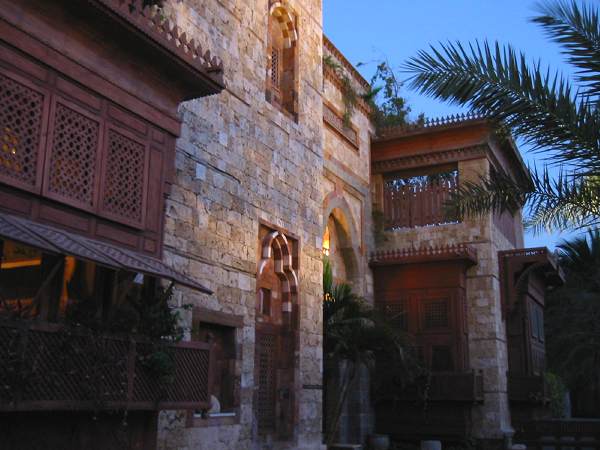
He has water flowing through the main courtyard, and there is even an interior swimming pool to give yet more feeling of freshness. It was not filled with water when we were there, so you can see it with all its detailed tiling on the photo below.
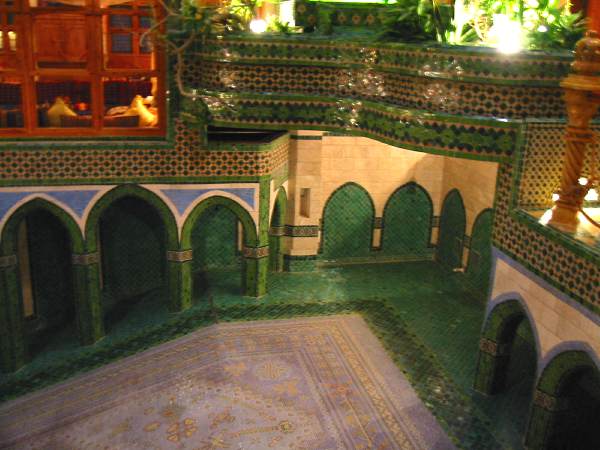
The sitting section of the roof overlooks the interior of the house, but even more importantly, there are all the stars above, and fresh evening air!
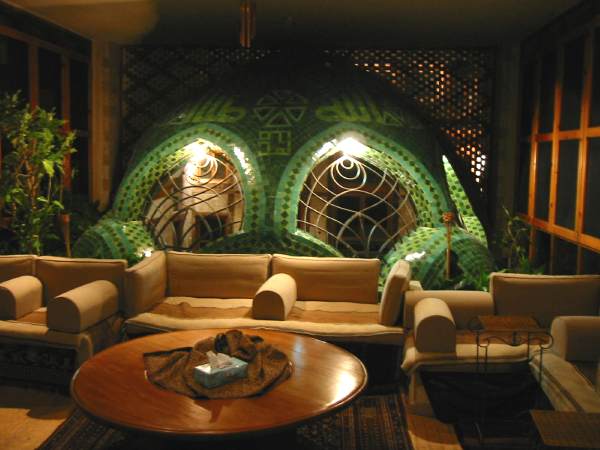
There are many social areas, with lots of Bedouin antiques and imports from the rest of the Arabic world. I loved the floors, and the ceilings, and the walls, and then the furniture as well: that really sums it up.
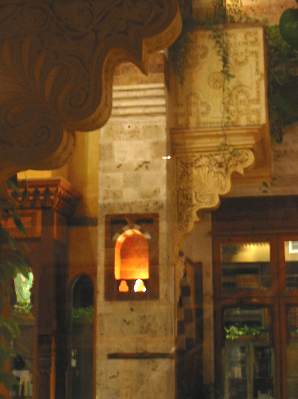
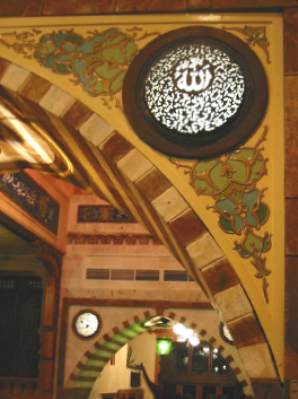
The attention to detail is stunning.
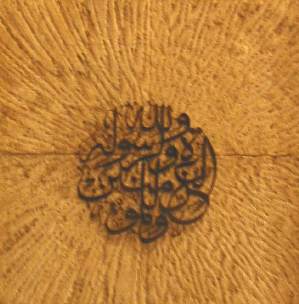
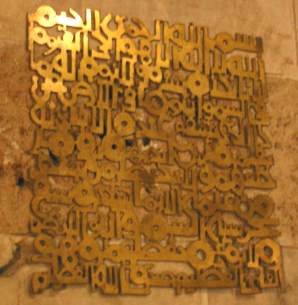





|
page 8 of 12
Silvija Seres, 25 April 2002